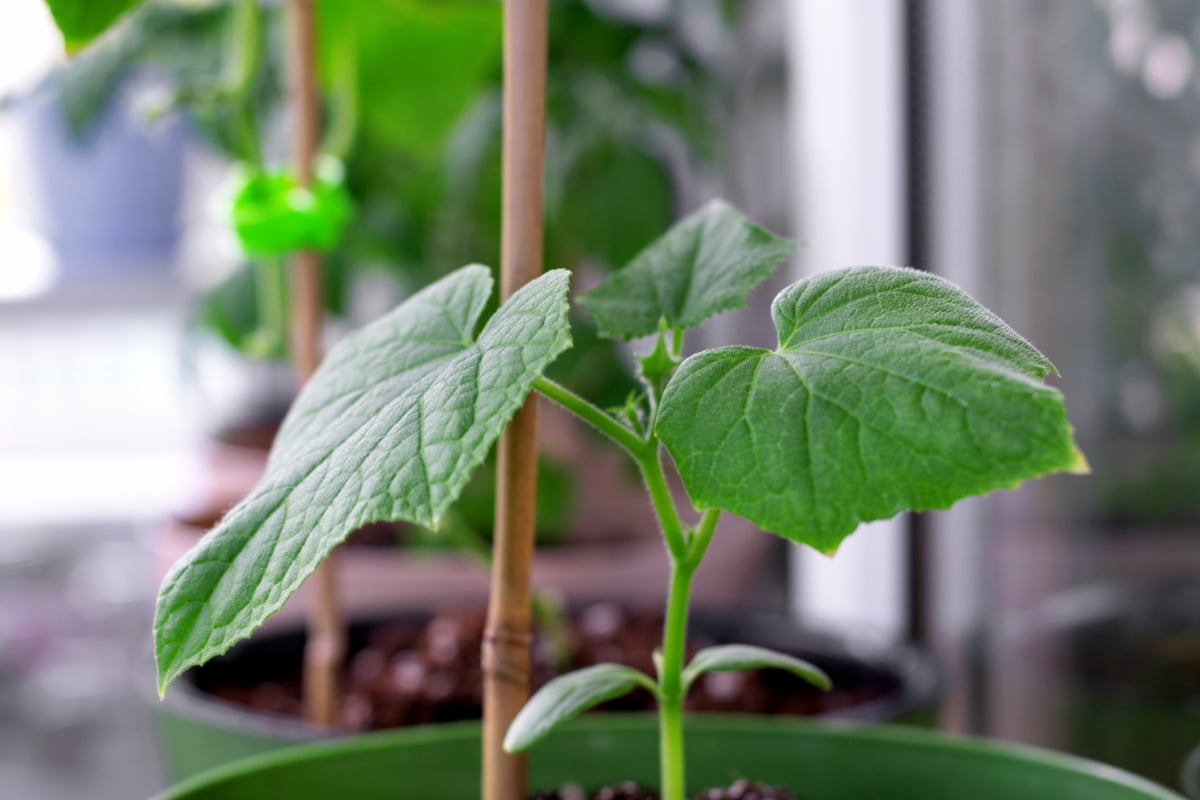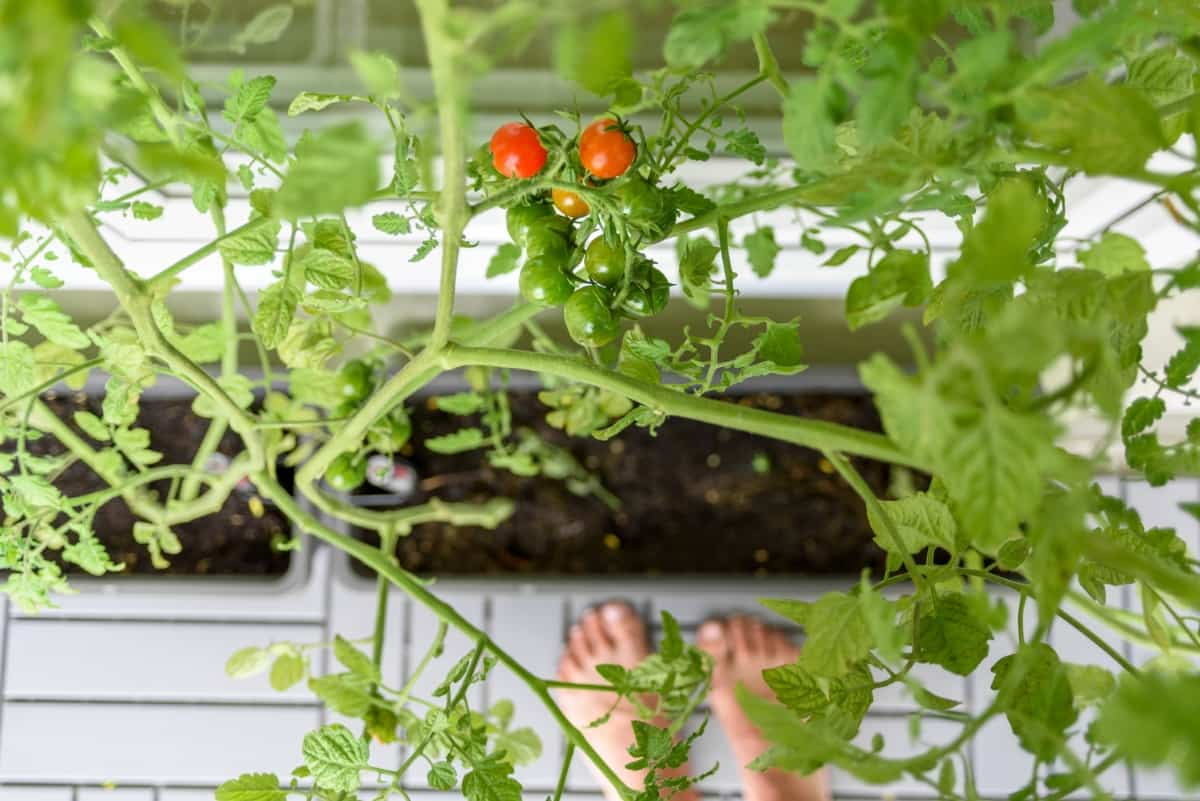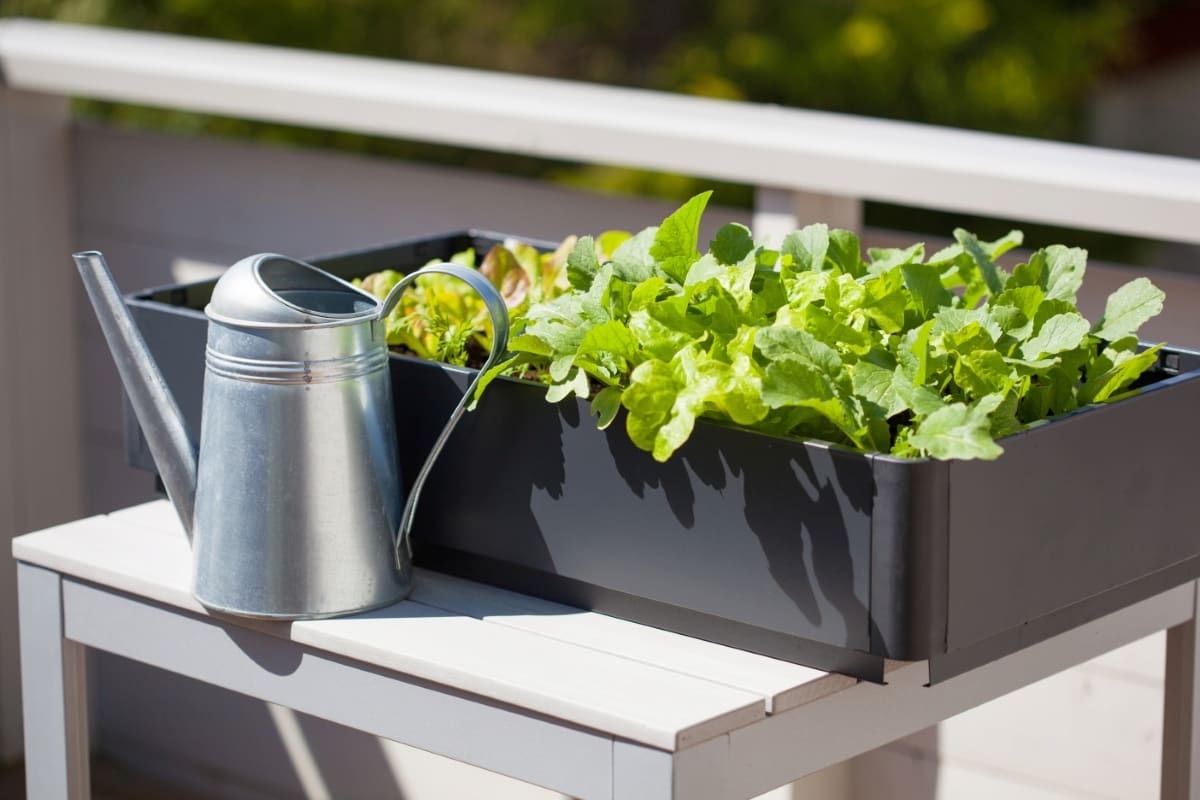Organic vegetable gardening on an apartment balcony is a rewarding and sustainable way to grow your fresh produce, even if you have limited space. This small-scale, environmentally friendly approach allows you to enjoy the benefits of homegrown vegetables, herbs, and fruits while minimizing your carbon footprint. Whether you’re a beginner or an experienced gardener, here’s a guide to organic vegetable gardening on your apartment balcony. You can enjoy fresh, homegrown organic produce on your apartment balcony with diligence and eco-friendly methods.

Growing Vegetables Organically on the Apartment Balcony
Best Vegetables for Apartment Balcony Gardening
- Opt for compact varieties like cherry tomatoes, dwarf peppers, and bush beans, which thrive in confined areas.
- Plant leafy vegetables that grow well in pots, such as spinach and lettuce, since they are shallow-rooted and have a short root system.
- Herbs like basil, cilantro, and chives also flourish in small containers. Radishes and small carrots can be grown in deep pots or planters.
- Additionally, consider vertical gardening with cucumbers, peas, or pole beans, maximizing space.
- These vegetables are space-efficient and perfect for fresh, homegrown produce in your limited balcony space.
How to Prepare the Balcony for Organic Vegetable Gardening
- Ensure your balcony receives at least 6-8 hours of sunlight.
- Select appropriate containers with good drainage, such as pots, planters, or vertical gardens.
- Use high-quality organic potting mix to provide essential nutrients.
- Select organic, non-GMO varieties from a reliable source.
- Arrange a watering system or schedule to maintain consistent moisture without overwatering.
Best Containers and Organic Soil for Apartment Balcony Gardening
Opt for lightweight, durable containers like plastic or resin pots, wooden planters, or fabric grow bags for apartment balcony gardening. These options are easy to move and provide good drainage. Use high-quality organic potting soil or mix your own using equal parts compost, peat moss, vermiculite, or perlite. Ensure the soil is well-aerated and free from synthetic chemicals. Look for certified organic soil products or create your organic blend for healthy and productive container gardening.
Make Organic Seeds or Seedlings Available for Balcony Vegetable Gardening
To start your balcony vegetable garden, prioritize organic seeds or seedlings. Source them from reputable organic nurseries, local farmers’ markets, or trusted online suppliers. Look for certifications or labels indicating organic cultivation methods. Opt for heirloom or open-pollinated varieties for genetic diversity. Consider joining seed exchanges or community gardening groups for sustainable seed sharing. Additionally, explore DIY methods like seed-saving from previous organic crops.
Sunlight and Water Requirements for Growing Organic Vegetables on the Balcony
Growing organic vegetables on a balcony needs at least 6-8 hours of direct sunlight daily. Choose a location with ample sunlight exposure, preferably facing south or southwest. Supplemental grow lights can be used if natural light is limited. Ensure proper drainage to prevent waterlogged soil, but maintain consistent moisture levels. Water deeply when the top soil is dry, typically 2-3 times per week, adjusting based on weather conditions. Use a saucer or tray under pots to catch excess water.
In case you missed it: Creating a Vertical Vegetable Garden on a Balcony: Big Harvest in Small Space

Organic Pest Control Methods in Apartment Balcony Gardening
Use companion planting, such as marigolds to deter aphids or basil to repel flies. Handpick or hose off pests like aphids and caterpillars. Spray a homemade solution of neem oil, garlic, and soap to deter insects. Maintain good hygiene by removing fallen leaves and debris to minimize hiding spots for pests. Regularly inspect your plants for early pest detection and intervention, reducing the need for chemical solutions and fostering a healthy organic garden.
Fertilizing Instructions for Organic Balcony Vegetable Gardening
Start with nutrient-rich organic potting soil. As your plants grow, feed them with compost or well-rotted organic matter every 4-6 weeks. Use organic liquid fertilizers like seaweed or fish emulsion sparingly, following package instructions. Ensure proper dilution to avoid overfeeding. Maintain a balanced pH level and periodically check soil quality.
Composting Techniques for Organic Balcony Vegetable Gardening
Use a small, lidded container to collect kitchen scraps such as vegetable and fruit scraps, eggshells, and coffee grounds. Mix these “green” materials with “brown” materials like shredded newspaper, dry leaves, or straw in a 2:1 ratio. Turn the pile every few weeks to aerate it and ensure decomposition. Avoid adding meat, dairy, or oily foods. Over time, you’ll produce nutrient-rich, organic compost to enhance soil fertility, retain moisture, and reduce waste, promoting healthy balcony vegetable growth.
Cost to Start Organic Vegetable Gardening on An Apartment Balcony
- Depending on the size and material, pots and containers can range from $5 to $30 each. You might need at least 3-5 pots to start with.
- A bag of organic potting soil typically costs between $5 and $15. You’ll likely need at least 2-3 bags.
- The cost of seeds or seedlings varies widely depending on the type and variety of plants you choose. A packet of organic seeds can range from $2 to $5, while young seedlings might cost anywhere from $2 to $8 each.
- An organic fertilizer can cost between $5 and $15 per bag, and compost can be obtained for free if you compost kitchen scraps or purchased for around $5 to $20 per bag.
- A basic watering can can be purchased for around $5 to $10. If you prefer a hose, it may cost between $15 and $30.
- If you plan on growing climbing plants like tomatoes or beans, trellises or supports can range from $10 to $30.
To start organic vegetable gardening on your apartment balcony, you can expect to spend between $50 and $200.
In case you missed it: How to Build an Apartment Balcony Raised Garden Bed: DIY for Vegetables, Flowers and Herbs

Common Mistakes to Avoid in Organic Vegetable Gardening on An Apartment Balcony
Common mistakes in balcony organic gardening include overcrowding pots, stunted growth, and poor airflow. Using non-organic soil or failing to replenish nutrients can hinder plant health. Over or under-watering can stress or drown plants. Neglecting pest prevention leads to infestations.
Avoiding regular pruning and harvesting causes overgrowth and decreases yield. Inadequate sunlight can lead to leggy or weak plants. Lastly, not paying attention to soil quality and pH levels can result in nutrient deficiencies. Careful planning, monitoring, and organic practices help prevent these common pitfalls in balcony vegetable gardening.
Frequently Asked Questions on Growing Vegetables Organically on the Apartment Balcony
How Do You Grow Organic Vegetables On a Balcony?
Start by selecting a sunny location and using containers with good drainage. Choose organic potting soil and pick suitable vegetables for small spaces. Water consistently, use organic fertilizers, and employ natural pest control methods. Regular maintenance, like pruning and harvesting, is crucial, and continuous learning is key to success. This environmentally friendly approach allows you to enjoy homegrown, pesticide-free vegetables even in a limited space.
How Do I Keep My Balcony Plants Healthy?
Ensure they have proper sunlight, well-draining soil, and containers with drainage holes. Water consistently, avoid overwatering, and use organic fertilizers to provide essential nutrients. Regularly inspect for pests and diseases, addressing issues promptly. Pruning and deadheading can help maintain plant vigor. Lastly, pay attention to your plant’s specific needs, whether shade, full sun, or regular harvesting, and adjust care accordingly.
How Do You Manage a Balcony Garden?
To manage a balcony garden effectively, utilize vertical space by attaching pots, shelves, or trellises to the walls. Install hooks for hanging plants if there’s a ceiling, and cover the railings with chicken wire for climbing plants, or use plant hangers that attach to the top of the railing to maximize your growing area.
How Do You Manage Plants in a Small Balcony?
Use space-saving containers, vertical gardening, and hanging baskets to maximize space. Choose compact plant varieties and use quality organic soil with proper drainage. Water and fertilize regularly, employ organic pest control methods, and ensure adequate sunlight. Regular pruning and maintenance are key, and make the most of your limited space with careful planning and organization.
In case you missed it: 10 Best Automatic Watering Systems for Balcony, Greenhouse, and Raised Beds

Conclusion
Growing organic vegetables on an apartment balcony, regardless of size, can be rewarding and sustainable. With these strategies, you can maximize your space while enjoying the freshest, chemical-free produce.
- Feed Your Flock for Less: Top 10 Tips to Save on Chicken Feed
- Ultimate Guide to Ossabaw Island Hog: Breeding, Raising, Diet, and Care
- Hatching Answers: The Top 10 Reasons Your Chickens Aren’t Laying Eggs
- Eggs and Economics: Breaking Down the Cost of Raising Backyard Chickens
- Defend Your Greens: Proven Methods to Keep Iguanas Out of Your Garden
- Ultimate Guide to Cinnamon Queen Chicken: A Comprehensive Guide for Beginners
- Ultimate Guide to California Tan Chicken: Breeding, Raising, Diet, Egg-Production and Care
- Ultimate Guide to Marsh Daisy Chicken: Breeding, Raising, Diet, and Care
- 10 Types of Chicken Farming Businesses You Can Start for Profits